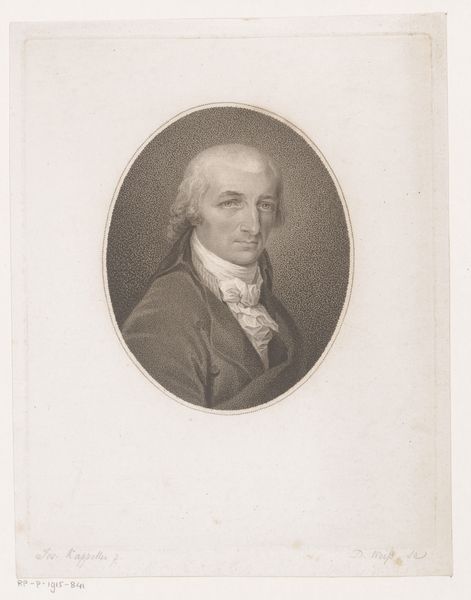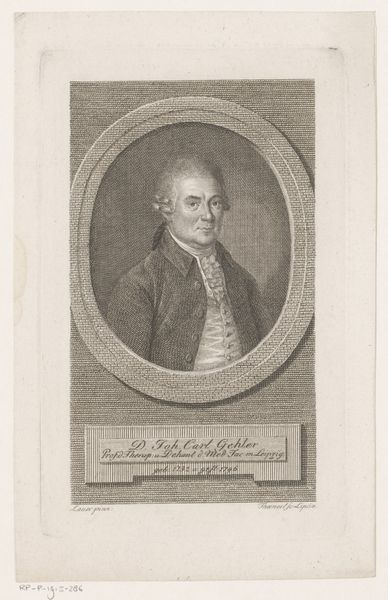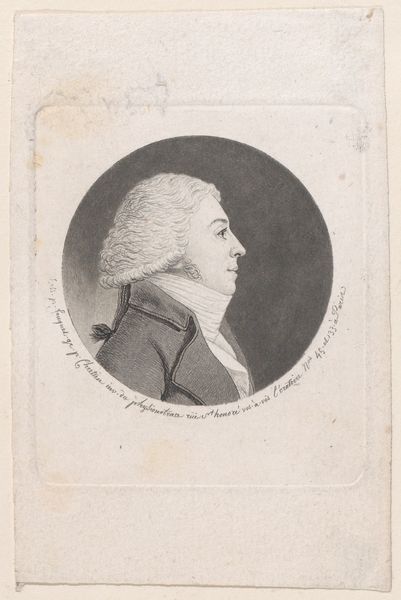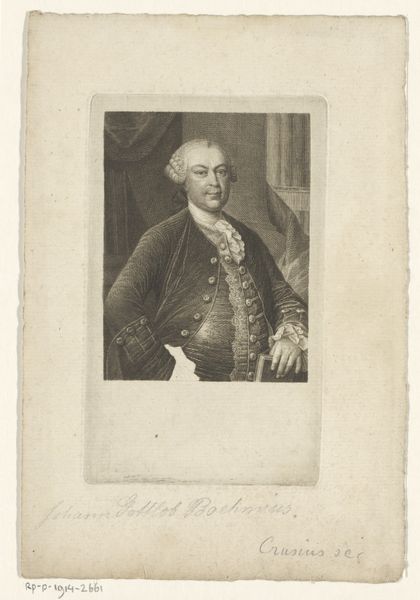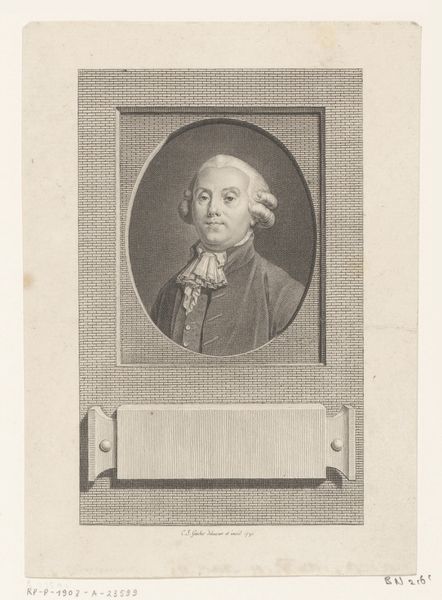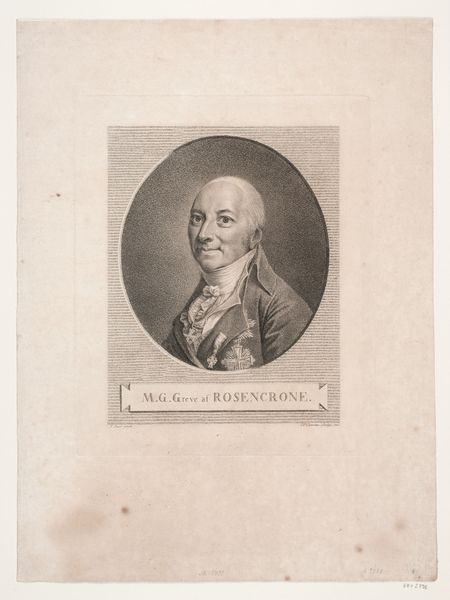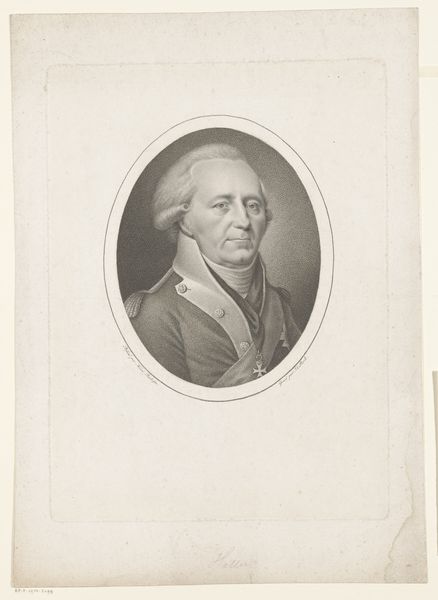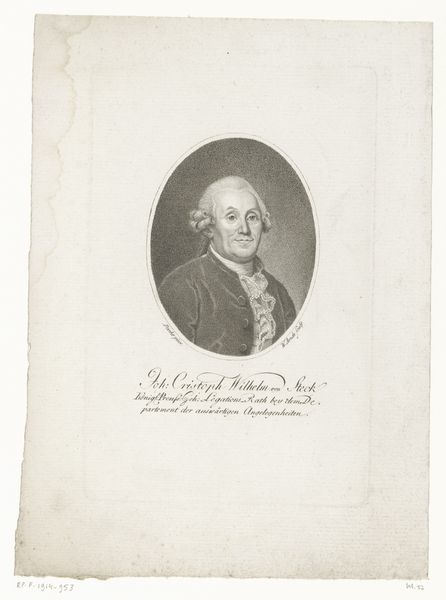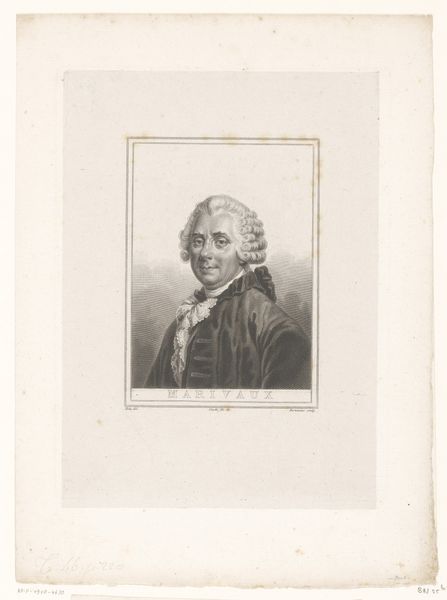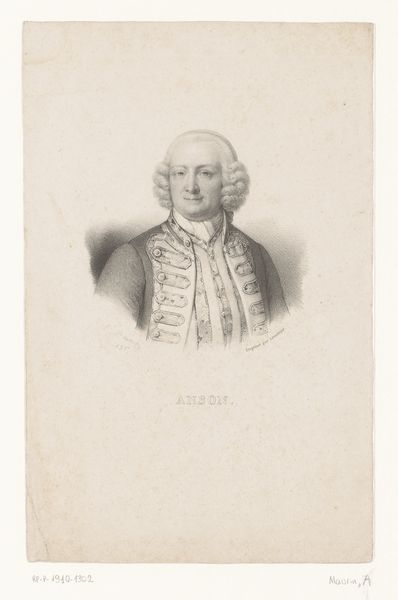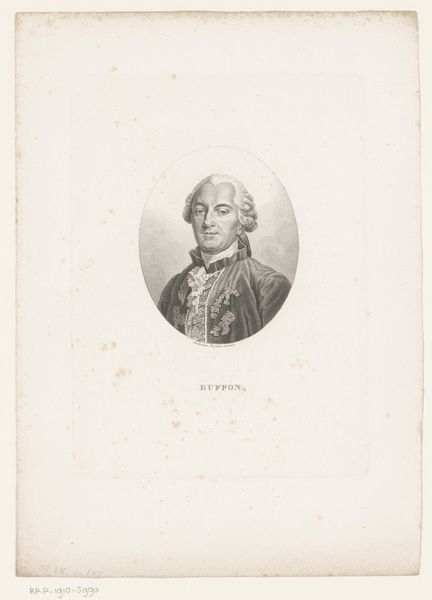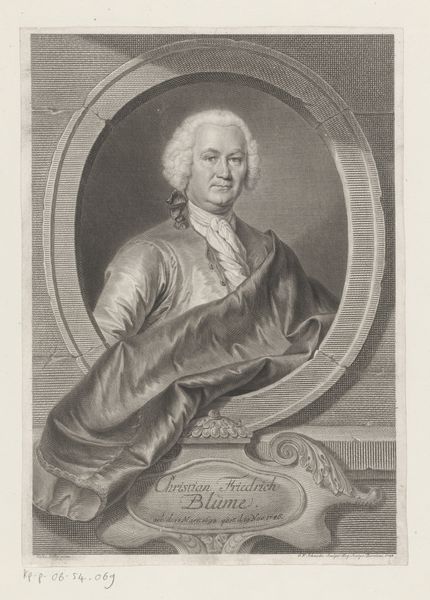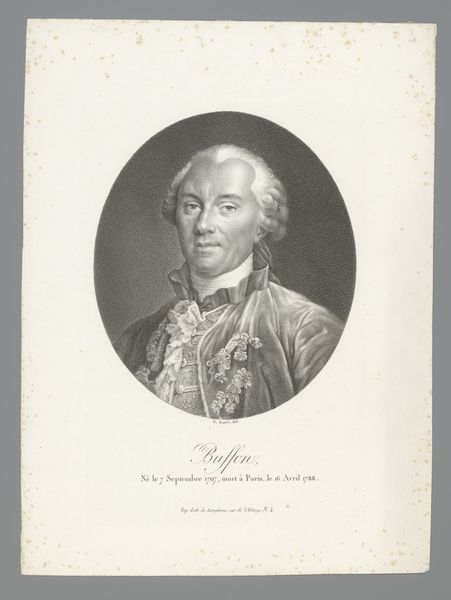
engraving
#
portrait
#
neoclacissism
#
old engraving style
#
historical photography
#
portrait reference
#
line
#
history-painting
#
academic-art
#
engraving
Dimensions: height 266 mm, width 197 mm
Copyright: Rijks Museum: Open Domain
Editor: So this is Anton Wachsmann’s "Portret van Johann Goercke," dated between 1775 and 1836. It's an engraving, and what strikes me is its formality, almost severe in its presentation. How do you interpret this work within its historical context? Curator: The formality you observe is characteristic of Neoclassicism, an era deeply intertwined with power structures and social identity. Consider the subject's attire. What does it convey about his social standing, and how might that relate to broader societal hierarchies? Editor: He’s wearing what looks like a military uniform. Does this tie into ideas of nationalism or social mobility? Curator: Precisely! Uniforms not only denoted profession but also allegiance and status within a burgeoning national identity. Moreover, portraiture, like this, during the late 18th and early 19th centuries, served as a tool for constructing and reinforcing gender roles, class distinctions, and national ideals. How do you see those ideals reflected or challenged in this portrait? Editor: It feels like the portrait reinforces the status quo rather than challenges it. The clean lines and lack of emotion suggest a desire for order. Curator: Exactly! It's also worth examining who was typically represented in such portraits. Were marginalized communities given similar platforms, or were these opportunities primarily reserved for individuals like Goercke? Editor: That's a great point. I hadn’t considered the voices missing from this historical record. Curator: Analyzing such works compels us to think about the narratives being promoted and those being suppressed, highlighting art's active role in shaping social consciousness. What's your final thought? Editor: This portrait is more than just a likeness; it's a carefully constructed statement about power and identity in a specific historical moment. Curator: Agreed. By examining the cultural, political, and social dimensions embedded in art, we deepen our understanding of not just history but also ourselves.
Comments
No comments
Be the first to comment and join the conversation on the ultimate creative platform.
